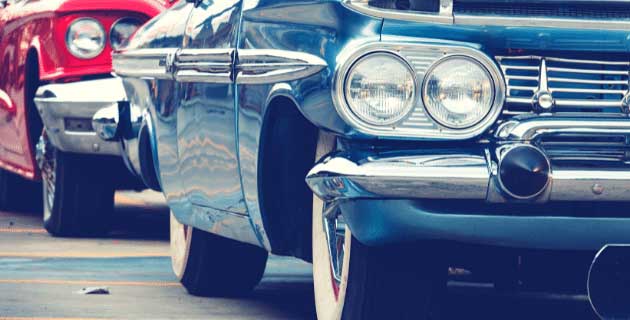
by California Casualty | Auto Insurance Info |
We’ve all got that one person in our lives who absolutely lives for cars. Their knowledge can rival any Google search. And don’t even get them started about a certain body style or engine, or they’ll never stop. To them their car isn’t just a car; it’s their baby.
If you’ve got one of these folks on your gift list, you’re in luck! Whether it’s the latest tech toy or the unusual find, we’ve got the best gifts for all car enthusiasts below.
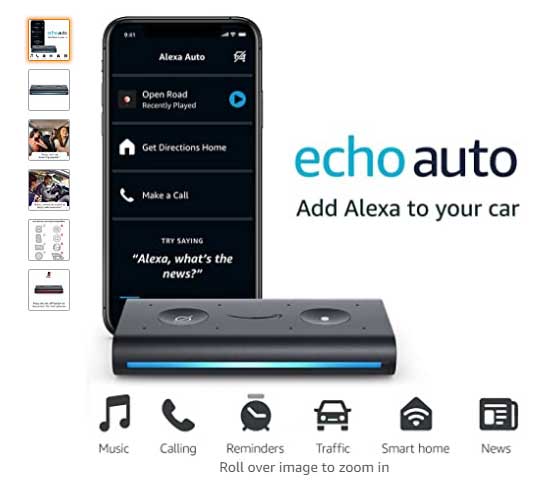
Hi-tech Gear
The car may be the centerpiece but these hi-tech additions can make a sweet ride even sweeter!
- Amazon Echo Auto puts Alexa right in your car. The device connects to the Alexa app on your phone and plays through your car’s speakers. Alexa can play music, make calls, find a nearby coffee shop, pay for gas, all at the command of your voice. It doesn’t work with all car models or smartphones, so check before you buy.
- NOCO’s Portable Battery Jump Starter Pack offers peace of mind if you ever need an extra charge. It’s also an LED flashlight and a portable power bank for USB devices. This booster is rated for gasoline engines up to 6 liters and diesel up to 3 liters.
- The Garmin Dash Cam Mini 2 alerts you if there’s an incident around your car and automatically records it. It provides video if you’re ever in an accident. This device is prohibited in some areas; make sure you’re aware of the local laws.
- The Car Cushion with Massage and Heat from Sharper Image offers comfort and warmth for those long, cold winter drives—and even the short ones!
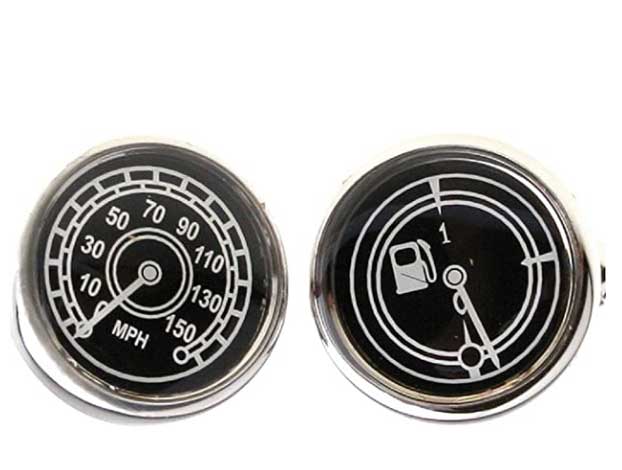
Car Inspired Fashion
These trendsetters are a must for car lovers when they aren’t behind the wheel.
- Puma has a line of motorsport sneakers that celebrate such carmakers as Porsche, BMW, and Ferrari. With logos and team colors, these kicks are perfect for life in the fast lane. Pair them with Heel Tread socks, inspired by classic car brands.
- Driving gloves are not only a stylish accessory. They give you a firmer grip on the wheel and they keep the wheel from getting dirty or sticky.
- From t-shirts with classic Corvettes to funny ones that proclaim “still plays with cars,” Zazzle has some great options.
- Speedometer and fuel gauge cufflinks are the perfect accessories for any dress-up occasion.
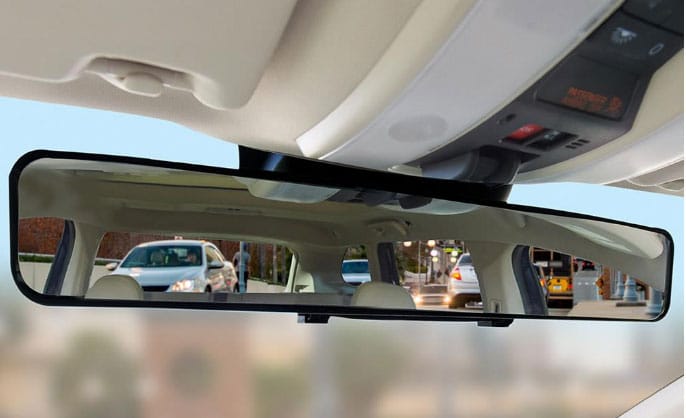
Practical – and Fun
Check out these fun and useful ideas for the car lover in your life.
- Etsy has some wonderful presents for car lovers. If you’re looking to open a little bubbly this holiday season, the spark plug bottle opener is the perfect gift. Or try these car coaster cup holders that keep those pesky places clean from dirt and debris. For the car-loving dad in your life, this key chain says it all.
- The No Blindspot Rearview Mirror was rated the best by the Hammacher Schlemmer Institute. It offers a 180-degree view with no distortion, and clips right over most existing rearview mirrors.
- The Gillette Heated Razor Bugatti Limited Edition pays homage to the iconic Bugatti. Plus, this razor heats up, delivering a shave that’s as luxurious as the car!
- Teachers, give a special gift by extending your NEA Member Benefits to eligible family members. NEA Member Benefits recently added siblings to the list of family members eligible to access the NEA Auto and Home Insurance Program provided by California Casualty. Parents, in-laws, adult children, and now siblings can take advantage of the special rates, deep discounts, and personalized service available through the NEA Auto and Home Insurance Program.
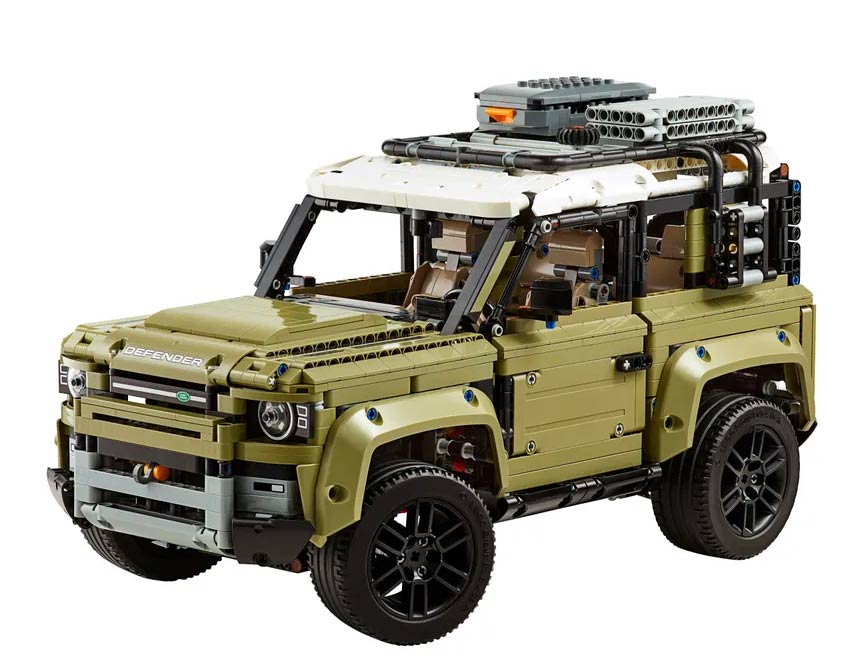
Just for Fun!
Put a smile on every car lover’s face this season with these uniquely fun gifts.
- LEGO® isn’t just for kids. The toymaker has an extensive line of car kits for adults. This includes the LEGO® Technic Lamborghini Sian FKP 37 and the James Bond™ Aston Martin DB5. Let the car lovers in your life build their dream car collection.
- For the gamer in your family, the Logitech G920 Racing Wheel offers a great “driving” experience. It realistically simulates the feel of your car and tires on every turn.
- When you can’t get enough of your car, a custom watercolor print is just the thing! You can also find beautiful car wall art on Fine Art America.
- For the ultimate gift, give your car lover a ride in a race car. Virgin Experience, Xtreme Experience , and others offer chances to drive tracks throughout the U.S. Also check Groupon for local listings of exotic car rides or rentals in your area.
Happy holidays from California Casualty!
This article is furnished by California Casualty, providing auto and home insurance to educators, law enforcement officers, firefighters, and nurses. Get a quote at 1.866.704.8614 or www.calcas.com.

by California Casualty | Homeowners Insurance Info, Pets |
You came home to a rug that’s been chewed to shreds and a mess on the carpet—again. Now your house is smelling (and looking) a bit like a kennel… You love your dog, so you’re thinking it may be time to scrap the carpet altogether.
But think twice before you make any rash decisions. Carpets have so many advantages for your home! They muffle noise. Dogs won’t slip and slide on them like they can on hard surfaces. You also don’t have to worry about their claws scratching your hardwood floor. Plus, carpets are a soft place for your feet and for their paws.
The good news is that dogs and carpets can actually coexist nicely. Here’s what you need to know.
Choose the right carpet.
Not all carpets are the same when it comes to protecting against pet stains and messes. Look for carpets made of nylon, wool, or a material known as olefin. The most popular option, nylon is durable and easy to clean. It also has built-in stain resistance. Wool, the more expensive option, has some natural stain resistance but cannot be treated with a stain-resistant coating. Olefin was originally used in outdoor carpets but has been engineered to have more of the feel of wool. It’s made from plastic fibers, is easy to clean, and repels moisture.
Take care of new messes right away.
Cleaning up after your pet is part of being a responsible pet owner. The best way to keep your carpet from staining is to address your pet’s accidents right away. If you use a store-bought cleaner, choose one with a neutral pH to help remove the acidity of your pet’s urine. You can also make your own cleaning solution from vinegar, baking soda, and water. Here are two natural methods for cleaning up pet urine on carpet.
Method #1
-
- Place a thick layer of paper towels over the wet spot.
- Cover the towels with layers of newspaper.
- Stand on the newspaper for a few minutes for it to absorb the urine.
- Remove the paper and paper towels and dispose of them.
- Rinse the area with cool water.
- Blot up the water with towels. If you have a wet vac, you can use that instead.
- Once most of the liquid is blotted, spread baking soda over it. Use ¼ cup or less. (Note that large amounts of baking soda are toxic to dogs so keep your fur baby away.)
- Let the mixture sit overnight and then vacuum the spot thoroughly the next morning. The area should feel clean to the touch.
Method #2
-
- In a clear spray bottle, mix one cup of distilled white vinegar with one cup of water and 2 teaspoons of baking soda. Shake it up.
- Spray the mixture on the stain.
- Let it sit for a few minutes and then blot it with a towel until clean.
You can use these methods for other pet messes such as vomit or poop. Remove the vomit or feces before treating the carpet, being careful not to embed it in the carpet fibers. Act quickly; the acid in vomit can quickly discolor your carpet.
Take care of old stains, too.
Old urine stains can cause a lingering odor in your home. You can take care of these stains in several ways. One way is to use an enzymatic cleanser that breaks down the stain at the molecular level. You can find these cleansers at pet stores. Another way is to rinse the area thoroughly with water, then use a wet-dry vacuum to clean it up. Importantly, do not use a steam cleaner. The heat can set the odor and stain permanently.
Not sure where the stains are? A blacklight can help you find them. The wavelengths of blacklight cause the proteins in urine to glow.
Add a carpet runner to high-traffic areas.
Consider a carpet runner or area rug over your wall-to-wall carpeting for an extra barrier. Place it in high-traffic areas or where your dog commonly goes. Carpet runners and area rugs may be picked up and cleaned, and more easily replaced, if needed.
Clean their paws and clean your carpet.
There’s a lot of preventive care that you can take to keep your carpets clean. Start by wiping and drying your dog’s paws when your fur baby comes in from outside—especially on rainy, snowy, or muddy days. Then, take care of your carpet by vacuuming regularly and shampooing your carpet every 12 months to remove dirt, grime, and allergens. You can schedule a professional carpet cleaning or do it yourself.
Train your pet.
When you adopted your pet, you made the commitment to stick with them through the good and the bad. Oftentimes bad behavior like going to the bathroom on the carpet can be un-trained. You can do this by kennel training when you are gone or using a reward method when they go outside. If you need help, talk to your pet’s veterinarian for ways you can teach your pet to unlearn these behaviors or find a local trainer! You may think you are doing them a favor by not disciplining them when they make a mess or start chewing on furniture, but really you are getting in the way of the great pet they have the potential of becoming- by not letting them learn that these behaviors are ‘bad’.
Keep in mind the age of your pet plays a factor. A puppy or an older dog may need extra attention and may have more accidents than a dog in its prime.
Does homeowner’s insurance cover damage from your pets?
Unfortunately, homeowner’s and renter’s insurance both do not cover the damage your pet does to your carpet—or to any of your personal property. Take note that even your carpet warranty probably does not cover pet damage. If your pet, however, gets loose and damages property at your neighbor’s, the liability coverage in your homeowner’s policy may kick in and cover some of the costs.
This article is furnished by California Casualty, providing auto and home insurance to educators, law enforcement officers, firefighters, and nurses. Get a quote at 1.866.704.8614 or www.calcas.com.
by California Casualty | Auto Insurance Info |
You’ve been in an accident. Thankfully, you’re not hurt, but unfortunately, you can’t say the same for your vehicle. If the repairs on your car cost more than your vehicle is worth and it needs to be totaled, in the insurance world it is considered a ‘total loss.’
Sounds expensive, right? Don’t worry, your auto insurance policy is designed to protect you in case of an accident. Here are some FAQs to know what to do if this happens to you or a member of your family.
How do you know if your car is totaled?
A vehicle is usually considered a total loss if the damage meets or exceeds around 80% of its value. The insurance company will send an adjuster to look at your car in most cases. The repair shop also may weigh in. The mechanic will examine the structure of your vehicle. He or she will list the repairs needed. Your insurer will check state laws – because some states have rules about how much damage qualifies for a total loss. In all, this assessment will determine the cost to repair your car. If that amount is too much, your vehicle is considered “totaled.”
It is worth noting that you don’t have to be in a car accident to total your vehicle. Your car also could be damaged beyond repair by fire or extreme weather. If a tree falls on your car, that could total it too. The claim process works the same way for those situations.
How much will you get for your car if it is totaled?
If your car is totaled, your insurer will pay you for the actual cash value (ACV) of your car. That amount is determined by your vehicle’s age, condition, mileage, options, and resale value. Since newer vehicles depreciate once you drive them off the lot, the cash value of your car may not be the same as the price you paid—even if the accident occurs soon after you purchased the vehicle.
What if the accident was the other driver’s fault?
If the accident was not your fault, you can file a claim with the other driver’s insurance company. Their policy will pay you using their property damage liability coverage. But what happens If the other driver doesn’t have insurance, or doesn’t have enough insurance to cover damages? Then you will be covered under uninsured/underinsured motorist property damage. These are optional coverages in the majority of states. In some states, you are not allowed to carry collision and UMPD at the same time. Also, sometimes UMPD has a policy maximum or cap on the amount it will pay. If you have UMPD/UIMPD, and it isn’t enough to cover the total cost of your car, your own collision coverage will help.
What if the accident was your fault—or the fault of Mother Nature?
If you caused the accident, and your car is totaled, your insurance company will pay the cash value of your car minus your deductible and any state taxes or fees. When you are at fault, your collision coverage kicks in. Collision pays for totaled cars after colliding with another vehicle, tree, rail or other structure. You have this coverage if you are financing or leasing a vehicle; it’s required.
If Mother Nature caused the damage, comprehensive coverage pays for it. Again, this is coverage that is required if you are financing or leasing a vehicle. Comprehensive covers natural disasters, fires, vandalism, theft, and animals that damage your vehicle. However, if your car was paid off, and you don’t have comprehensive or collision insurance, you would be responsible for the full costs to repair your totaled vehicle.
Your car doesn’t look that bad. How could it be totaled?
You can’t always tell the extent of the damage by looking at a vehicle. For example, a car that sat in flood waters higher than the seat would have extensive flood damage to the engine. Looking at it after it has dried out might not tell you that parts need replacement. In addition,
repairs from collisions can cost more than you think. Finally, your state may have regulations that require vehicles with a certain amount of severe damage to be declared a total loss.
What if you want to keep your car anyway?
We understand that you may have a sentimental attachment to your car. Talk to your claims adjuster to see if you are able to keep it. Your settlement will be less if you decide to do so. In addition, you will have to talk to your insurance agent about the possibility of keeping a totaled vehicle on your policy or if you have to find other insurance. Proceed with caution. A car that has been totaled is usually better off replaced than rebuilt.
What if you haven’t paid off your car yet?
Accidents happen. That’s true whether your car is paid off or you’re still making loan payments. If you total your car and you’re still paying for it, you will continue to be responsible for the amount owed. That’s true even if you’re no longer able to drive the car. The good news is that you can use the money from the cash value of your totaled vehicle to repay the lender.
After you get the insurance check, there may still be an amount owed, and you will be responsible for it. Consider gap insurance also known as loan/lease insurance. This type of insurance covers the difference between the loan or lease payoff and the cash value of your car. It can provide peace of mind should you find yourself in this situation.
What if you totaled a leased car?
Your insurer will send the check for cash value to your lender. You will be responsible for any additional charges. If you still owe but the accident was not your fault, contact the other driver’s insurance company to cover that additional payment. It’s always a good idea to continue to make your lease payments until the insurance company issues the check so that your credit rating doesn’t suffer.
What if your teen totals your car?
In most cases, teen drivers are covered under their parents’ policies. The coverage selected by the policy owner will apply. If you have comprehensive and collision insurance, your teen will have the same deductible that you selected. Your or your son/daughter will pay the deductible and the insurance will cover the remaining cost. If, however, you don’t have comprehensive and collision, you will be responsible for the full amount.
Make sure you add your teen driver to your policy. Some insurers will deny coverage if your son or daughter is in an accident and not on your policy. Others will charge you for back premiums from the time the teen was licensed. National Teen Driver Safety Week is Oct. 17-23, 2021. It’s a good time to talk to your teen about car maintenance tips and distracted driving to help keep them safe on the roads.
What are the steps to take if your car is totaled?
After an accident, totaled vehicles are often sent to the impound lot, or tow yard, which is a holding place until the next step. If declared a total loss, they could be sent on to a salvage auction. Because the car may not be in your possession, you will want to remove all important information right after the accident.
-
- Make sure to clear out your personal belongings. Check all storage areas within your vehicle, including the glove compartment, trunk, and cubbies.
- Get all copies of the key.
- Get the title. If your car is leased, request that the title be sent to your insurance company. If you are not leasing, and you own the car, you can request a copy of the title from the DMV.
- Schedule vehicle pickup or drop-off with your insurer.
- Your adjuster will advise on handing over the title, and the keys if not already with the car.
- Sign the paperwork and receive payment.
This article is furnished by California Casualty, providing auto and home insurance to educators, law enforcement officers, firefighters, and nurses. Get a quote at 1.866.704.8614 or www.calcas.com.

by California Casualty | Auto Insurance Info |
Your son or daughter may have your eyes and your talent for sports. They also likely have your driving habits. Studies have shown that teen drivers often model their driving off of their parents.
Whether that’s good news… or not so good…. here’s a closer look at this phenomenon, and how you can keep your teen safe on the road.
What We Say Vs. What We Do
What parents do behind the wheel has a greater impact than what they say, according to a study by Toyota and the University of Michigan Transportation Research Institute. Researchers surveyed new drivers aged 16-18 and parents of this age group. They found that teens who engage in unsafe driving behaviors, such as cell phone use, often have parents who do the same.
That makes sense because long before your teen started driving, he/she was a passenger in your car. For years, you have been modeling driving habits without realizing it. Therefore, telling your teen not to text when driving – when you do it – can actually suggest that it’s really okay.
Tips for Parents of Teen Drivers
Now that your teen is driving, this is a good time to revisit and possibly revamp your driving habits. Here are seven easy ways that you can set a good example for your young driver.
1. Refresh yourself on the rules of the road.
It’s been a while since you’ve studied for your state driving test. Now might be a good time for a refresh. Pick up your state’s DMV handbook and review the rules. If your teen sees you taking this seriously, he/she will too. Pay special attention to your state’s graduated driver licensing program. States have these laws to ease new drivers into driving with limited hours, limited passengers and other precautions.
2. Put away the phone.
If you’ve ever texted or made a call while driving, you’re not alone. This distracted driving behavior is as common among adults as teens. But cell phone use is as dangerous as driving under the influence. You are just as likely to get into a crash when using a cell phone as when drinking and driving. Teens are frequent texters, and the temptation to do so behind the wheel is great. A study in the Journal of Adolescent Health revealed that nearly 40 percent of teens had texted or emailed while driving in the past 30 days. That’s why it’s important to model behavior where you put your cell phone away. Don’t use it at stop signs or red lights. Consider using your phone’s “do not disturb” setting while driving. That will automatically put it out of commission.
3. Put away the food.
It might be common for you to eat or drink behind the wheel. After all, isn’t that what drive-throughs are for? Yet anything that takes your attention away from the road is a distraction that could cause an accident. Instead of eating while driving, pull over into a parking spot. Then you can really enjoy that hot lunch, coffee or treat with your teen.
4. Watch your speed.
It’s tempting to drive faster when you’re running late. You also may speed when you’re tired after a long day and you just want to get home. However, speeding is never safe and often costly—in terms of tickets and wear-and-tear on your tires. Speeding also uses more gas. Make every effort to drive the speed limit with your teen. Set your car to cruise control. Remember why you are modeling this behavior.
5. Talk to your teen about drinking and driving.
The teenage years are filled with experimentation. Your teen may on occasion try alcohol, even if it’s illegal and you have forbidden it. As we know, drinking and driving are a dangerous combination. About one in four teen car crashes involve driving under the influence, according to the Substance Abuse and Mental Health Services Administration. Talk with your teen about their options should they find themselves in a situation where they – or a friend – have been drinking and is about to get in the driver’s seat. Emphasize that it is never okay to drink and drive and that the consequences could be deadly.
6. Make time to drive with your teen.
Your teen has watched you drive for years. Now it is your turn. Make the time to drive with your teen, in all road conditions. Show them that you trust them behind the wheel. Compliment him/her on safe driving behaviors. The more time you spend in the car with them, the more comfortable you (and they) will be when they are driving on their own.
7. Create a written safety agreement.
Sure, you’ve told your teen a hundred times not to text while driving and to be home by 10 pm. But putting those rules in writing makes them official. A written safety agreement shows in black and white exactly what you expect from your teen. Violations of that agreement could result in loss of driving privileges.
Use the elements of your state’s graduated license program as a basis for the safety agreement. This will likely include limiting the number of passengers in the car with your teen and the times that he/she can be on the road. Make sure you include any other family rules such as the curfew for the car being home, and how you wish your teen to check in with you. In doing so, you are setting up your teen for a lifetime of safe driving.
This article is furnished by California Casualty, providing auto and home insurance to educators, law enforcement officers, firefighters, and nurses. Get a quote at 1.866.704.8614 or www.calcas.com.
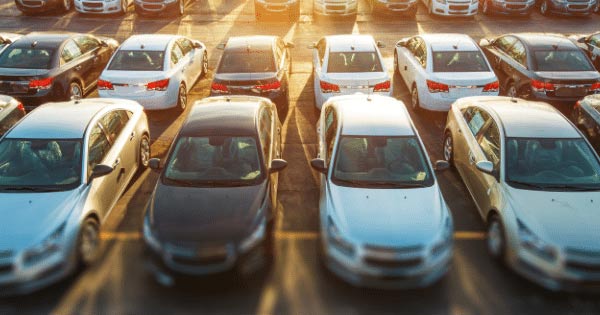
by California Casualty | Auto Insurance Info, Safety |
Teenagers and vehicles can be a deadly combination. Motor vehicle accidents are the leading cause of death in teens ages 15-20 in the United States.
It’s a terrifying thought that as a parent you can’t always be there to keep them safe when they are behind the wheel. Give yourself peace of mind by taking steps to educate your teen and give them the proper tools they need before they take off on their own.
This includes taking driver’s safety or education courses, practicing in all driving conditions, knowing what to do in an emergency, talking about the dangers of distracted driving; and most importantly doing your research and purchasing (or letting them purchase) a safe and reliable vehicle.
Now, we know looking for a new car can be stressful, especially with your teen who probably wants new-new and not new-to-them, so we’ve done the research for you.
Here are the best vehicles for teens in 2021 according to IIHS and Consumer Reports.
| Small cars |
Model years |
Price |
| Mazda 3 sedan or hatchback |
2014 or newer; built after October 2013 |
$8,100 |
| Toyota Prius |
2014 or newer; built after November 2013 |
$8,600 |
| Hyundai Elantra GT |
2018 or newer |
$15,200 |
| Subaru Crosstrek |
2017 or newer |
$17,900 |
| Honda Insight |
2019 or newer |
$18,200 |
| Toyota Prius Prime |
2017 or newer |
$18,200 |
| Toyota Corolla hatchback |
2019 or newer |
$18,300 |
| Kia Niro |
2019 |
$18,600 |
| Subaru Impreza sedan and wagon |
2019 |
$19,400 |
| Midsize cars |
Model years |
Price |
| Subaru Outback |
2013 or newer; built after August 2012 |
$8,700 |
| Subaru Legacy |
2013 or newer; built after August 2012 |
$8,800 |
| Mazda 6 |
2014 or newer |
$10,100 |
| Lincoln MKZ |
2013, 2016, 2018 or newer |
$10,300 |
| Honda Accord sedan or coupe |
2013 or newer |
$10,900 |
| Volkswagen Passat |
2016-17 |
$11,400 |
| Toyota Prius v |
2015-18 |
$11,600 |
| Volkswagen Jetta |
2017 |
$12,900 |
| Volvo S60 |
2016, 18 |
$14,100 |
| BMW 3 series |
2017 or newer; built after November 2016; 4-cylinder only |
$17,900 |
| Large cars |
Model years |
Price |
| Ford Taurus |
2014 |
$9,600 |
| Hyundai Genesis |
2016 |
$18,700 |
| Small SUVs |
Model years |
Price |
| Mazda CX-5 |
2014 or newer; built after October 2013 |
$9,300 |
| Nissan Rogue |
2014, 2016-18, 2020 |
$10,100 |
| Subaru Forester |
2016 or newer |
$13,500 |
| Honda CR-V |
2015 or newer |
$14,800 |
| Kia Sportage |
2017, 2018, 2020 |
$14,800 |
| Toyota RAV4 |
2015 or newer; built after November 2014 |
$14,900 |
| Honda HR-V |
2017 or newer; built after March 2016 |
$15,400 |
| Hyundai Kona |
2018 or newer |
$15,800 |
| Buick Encore |
2018-19 |
$16,300 |
| Hyundai Tucson |
2018 or newer |
$16,800 |
| Mazda CX-3 |
2019 or newer |
$17,800 |
| Volvo XC60 |
2017 |
$19,200 |
| Midsize SUVs |
Model years |
Price |
| Chevrolet Equinox |
2017, 2019 |
$13,700 |
| Nissan Murano |
2015 or newer |
$14,800 |
| GMC Terrain |
2017, 2019 |
$15,100 |
| Lexus NX |
2015-16, 2018 or newer |
$16,000 |
| Kia Sorento |
2017-18 |
$16,500 |
| Hyundai Santa Fe |
2017-19; built after March 2016 |
$18,700 |
| Ford Edge |
2018 or newer |
$19,600 |
| Mazda CX-9 |
2017 or newer; built after November 2016 |
$19,600 |
| Audi Q5 |
2016-19 |
$19,800 |
| Minivans |
Model years |
Price |
| Toyota Sienna |
2015-16 |
$13,900 |
| Honda Odyssey |
2016 |
$15,400 |
| Kia Sedona |
2017 |
$15,600 |
Remember, when looking at vehicles talk to your insurance agent to see what will save you the most with your teen on your policy. And don’t forget to look out for recalls or damage from previous owners.
This article is furnished by California Casualty, providing auto and home insurance to educators, law enforcement officers, firefighters, and nurses. California Casualty does not own the data table show above. Get a quote at 1.866.704.8614 or www.calcas.com.








